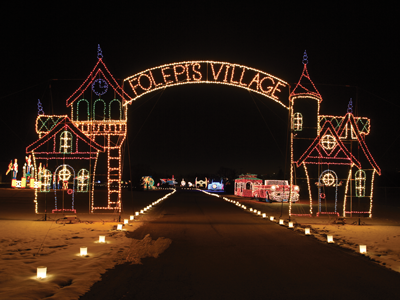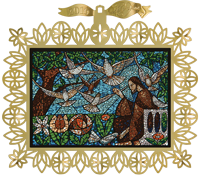Every region has its own holiday traditions, and Greater Peoria is no different. How many of these questions can you answer?
What’s the most popular Christmas show that’s not really a Christmas show?
Why, Eastlight Theatre’s production of Joseph and the Amazing Technicolor Dreamcoat, of course! An East Peoria holiday tradition since 1991, Joseph was the first Andrew Lloyd Webber/Tim Rice musical to be performed in public. Based on the “coat of many colors” story from the Book of Genesis, it’s the most-performed musical in history.
What is “Christmas on the Ghost Front”?
Presented by the Peoria Park District at Sommer Park, it’s a reenactment of December 1944, showing how American troops battled the cold weather in the days leading up to the Battle of the Bulge. It was World War II’s last major German offensive, a surprise attack that caught Allied forces completely off-guard—including our own former Congressman Bob Michel, who was wounded by machine gun fire. The snow-covered Ardennes region near the German border was so quiet that it was dubbed “the Ghost Front.”
 Who the heck is Folepi?
Who the heck is Folepi?
“Folepi” (FO-LEE-PEE) is the wooden soldier whose name is an acronym for the Festival Of Lights, a symbol of volunteerism in East Peoria.
True or false: Peoria’s first Santa Claus Parade took place on the Illinois River.
True! The nation’s longest-running Santa Claus Parade got started in 1887 to celebrate the construction of the Upper Free Bridge, located near the present-day McClugage Bridge. The boats and derricks in that first parade sailed down the Illinois River from Chillicothe. The next year, the bridge was complete and the parade was held on land, in downtown Peoria. In its third year, the parade was sponsored by the Schipper & Block department store, creating the concept of the department-store parade famously emulated by Macy’s, among others.
What are Mishumaa Saba and Zawadi?
They are terms related to Kwanzaa, the celebration honoring African heritage in African-American culture, derived from a combination of African “first fruit” (harvest) celebrations. Kwanzaa was created in 1966 after the Watts riots as a way to bring African-Americans together as a community. Mishumaa Saba (The Seven Candles) are symbolic of the values Africans are urged to live by, and Zawadi (The Gifts) symbolize the labor and love of parents and the commitments of their children. Learn more at Luthy Botanical Garden, which hosts a Kwanzaa display each year from December 26th to January 1st.
How did the Festival of Lights get started?
In the summer of 1984, the City of East Peoria (est. 1884) held a centennial celebration which drew strong volunteer support. The Festival of Lights was started that year to continue the spirit of volunteerism and community into the winter months. Its initial budget? $5,000.
 Who was Rolan Johnson?
Who was Rolan Johnson?
For decades, Rolan Johnson owned a print shop in downtown Peoria. In the late 1940s, he began producing Christmas cards to showcase his printing capabilities, displaying them in his shop window. In 1967, he started to produce multi-colored mosaic cards using enamel paint, painstakingly coloring each tile by hand. These cards brought Johnson national acclaim. From 1995 until his death in 2000, Johnson allowed the Sisters of St. Francis of the Immaculate Conception to produce a limited-edition, collectible ornament using his Christmas card prints. It became a major fundraiser for the Sisters—one which continues to this day. a&s
Happy holidays from Peoria Magazines… Click here for a list of upcoming holiday events!


